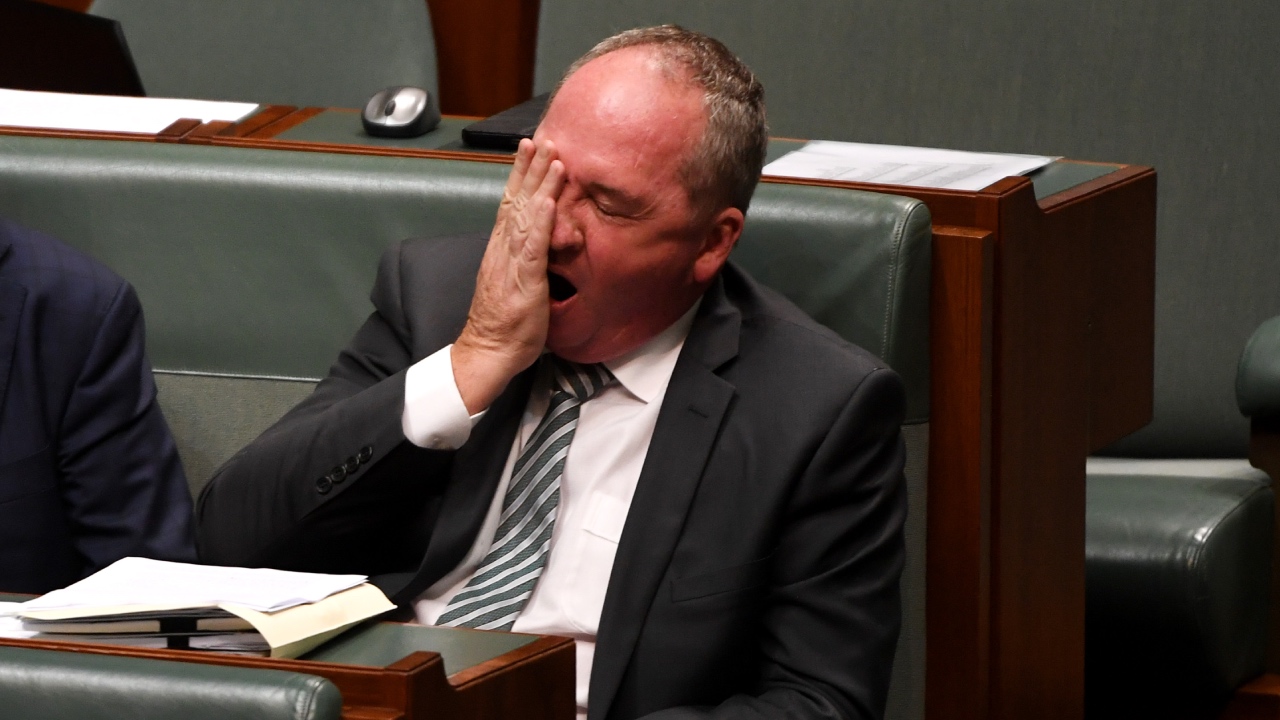Why Barnaby Joyce’s TV diagnosis of insomnia plus sleep apnoea is such a big deal

Alexander Sweetman, Flinders University
The health of Nationals MP Barnaby Joyce is in the news again, this time with a diagnosis of a sleep disorder made while filming a TV documentary.
Joyce’s diagnosis of insomnia plus sleep apnoea arose while filming Australia’s Sleep Revolution with Dr Michael Mosley in 2023. SBS has confirmed episode three, in which my Flinders University colleagues reveal his sleep disorder, is set to air on March 20.
I was not involved in the program and have no knowledge of Joyce’s ongoing health care. But I was part of the research team that in 2017 coined the term COMISA (co-morbid insomnia and sleep apnoea), the official name of Joyce’s on-screen diagnosis. Since then, I’ve led research into this common sleep disorder.
Here’s why it’s so important to diagnose and treat it.
What was Joyce’s diagnosis?
People can be diagnosed separately with insomnia or sleep apnoea.
Insomnia includes frequent difficulties falling asleep at the start of the night or difficulties staying asleep during the night. These can result in daytime fatigue, reduced energy, concentration difficulties and poor mood. Over time, insomnia can start to impact your mental health and quality of life.
Sleep apnoea (specifically, obstructive sleep apnoea) is when people experience repeated interruptions or pauses in breathing while they sleep. This reduces oxygen levels during sleep, and you can wake up multiple times at night. People with sleep apnoea may be aware of loud snoring, gasping for air when they wake up, or feeling exhausted the next morning. However, not all people have these symptoms, and sleep apnoea can go undiagnosed for years.
But in Joyce’s case, both insomnia and sleep apnoea occur at the same time.
We’ve known this could happen since the 1970s, with evidence growing over subsequent decades. Since then, sleep researchers and clinicians around the world have learned more about how common this is, its consequences and how best to treat it.
How do you know if you have it?
Many people seek help for their sleep problems because of fatigue, exhaustion, physical symptoms, or poor mood during the day.
If you think you have insomnia, a GP or sleep specialist can talk to you about your sleep pattern, and might ask you to complete brief questionnaires about your sleep and daytime symptoms. You might also be asked to fill in a “sleep diary” for one to two weeks. These will allow a trained clinician to see if you have insomnia.
If you or your GP think you may have (or are at risk of having) sleep apnoea, you may be referred for a sleep study. This normally involves sleeping overnight in a sleep clinic where your sleep patterns and breathing are monitored. Alternatively, you might be set up with a recording device to monitor your sleep at home. A trained medical professional, such as a sleep and respiratory physician, will often make the diagnosis.
Up to 50% of people with sleep apnoea report symptoms of insomnia. About 30–40% of people with insomnia also have sleep apnoea.
What are the consequences?
Insomnia and sleep apnoea (individually) are associated with reduced sleep quality, mental health and physical health.
Importantly, people with both at the same also tend to experience worse sleep, daytime function, mental health, physical health and quality of life, compared with people with no sleep disorder.
For instance, we know having both conditions comes with an increased risk of diseases of the heart.
In three studies, we found people with both insomnia and sleep apnoea have about a 50–70% higher risk of dying early from any cause, compared with people with neither sleep condition. People with insomnia alone and sleep apnoea alone did not have an increased risk of dying early.
However, there are effective treatments to reduce these health consequences.
How is it treated?
In general, it is best for people to access evidence-based treatments for both disorders. These treatments vary according to the patient and the severity of their condition.
For instance, wearing a CPAP mask while sleeping improves breathing during sleep and reduces many of the daytime consequences of obstructive sleep apnoea. However, other effective treatments may be recommended based on each person’s symptoms, such as weight management, avoiding sleeping on your back, oral devices (which look a bit like a mouthguard), or surgery.
The most effective treatment for insomnia is cognitive behavioural therapy for insomnia, also known as CBTi. About four to eight sessions often lead to improvements in sleep, daytime function and mental health that are maintained for many years. This can be delivered by trained therapists such as psychologists, nurses or GPs, as well as via online programs.
Last year, we drew together evidence from more than 1,000 people with both conditions. We found CBTi is an effective treatment for insomnia in people with treated and untreated sleep apnoea.
New treatments and approaches
We and other teams internationally are developing and testing new ways of delivering CBTi.
Several groups are testing devices, which stimulate the tongue muscles during sleep, to treat sleep apnoea in people with both disorders.
And we’re still working out the best order for patients to access treatments, and the best combination of treatments.
The power of TV
Joyce’s public diagnosis of both insomnia and sleep apnoea will no doubt raise awareness of what we suspect is an underdiagnosed condition.
Based on how common insomnia and sleep apnoea are in Australia, we estimate Joyce is one of about 5–10% of Australian adults to have both at the same time.
The Conversation contacted Joyce’s spokesperson for comment but did not hear back before deadline.
Alexander Sweetman, Research Fellow, College of Medicine and Public Health, Flinders University
Image credits: Getty Images
This article is republished from The Conversation under a Creative Commons license. Read the original article.
